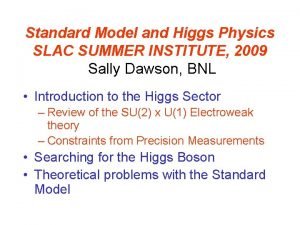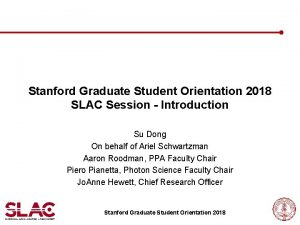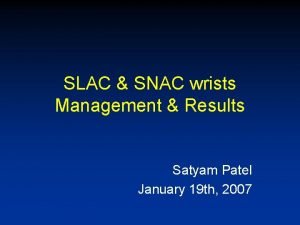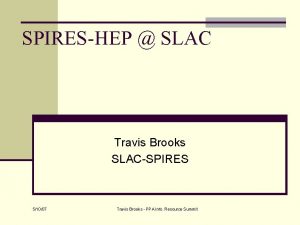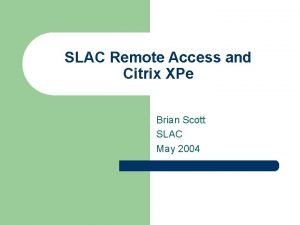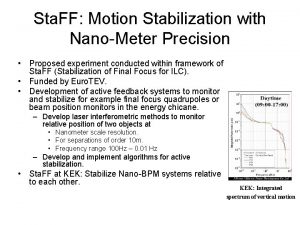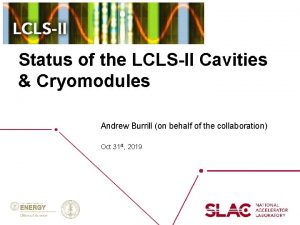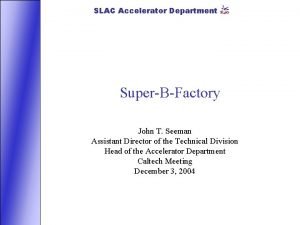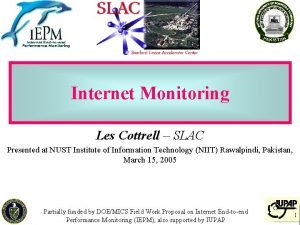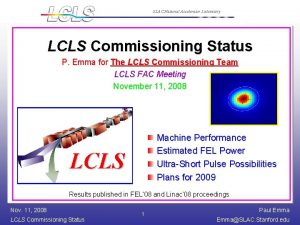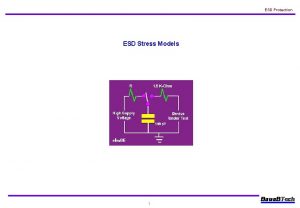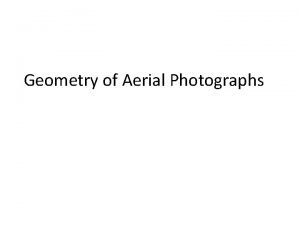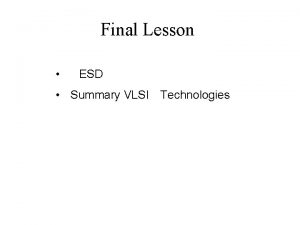SLAC Aerial View SLAC ESD looking anew at











- Slides: 11

SLAC Aerial View

SLAC ESD looking anew at timing • • The short-term (3 year) LCLS needs A long-term revamping of Klystron control A new look at the prototype NLC ideas Provide input to this meeting • How do we join SLC timing to EPICS timing to run the LCLS injector and Argonne-supplied Undulator?

SLAC Timing System Specifications Blue Book: (~1968) PEP – II: (~1998) - Resolution: 50 n. Sec - Resolution: 2. 1 n. Sec - Jitter: 15 n. Sec - Jitter: 20 p. Sec - Main Trigger Line - NIM Level Waveform: + / - 400 Volts 0 to – 0. 7 V into 50 Ohms

Trigger Generation, simplified

Waveforms: 119 MHz and NIM Pulse FIDO Output PDU Output

PDU – SLC Style Sixteen channels per PDU; One channel shown

PDU, Backplane, and STB

Some Triggered Devices • Kickers • Single Beam Dumper Logic • Beam Position Monitors • PAU – pulsed analog read or write • Toroid Charge Monitors • Trigger Gate and Synchronizer • Klystron Controls • Gated ADC readout

Software aspects • PDU is loaded with tables of delays (TMAT) • These tables are indexed by beam code • Beam code information is sent separately at 360 Hz (PNET) • This information was once 16 bits, now is 128 bits, plan is for at least 1024 bits. • 16 STB outputs are delayed as a function of beam code

Software aspects - 2 • PNET broadcast includes base beam code (#<32), highorder bits of pulse ID, modes, and beam code information as a function of mode. • Code can intervene to create more complex scenarios (beam code #>31) • PNET includes information for current pulse, next, and/or next+1 • Since 128 bits is not nearly enough, much information is a function of modes (near front of buffer) • This complexity is referred to as Regional Beam Codes

What is included in timing? • • • Stable phase reference Per-pulse digital information Preset timed data acquisition Preprogramming of complex scenarios Collecting beam-based acquisitions SLAC speak = BPM Buffered Acquisition – Data do not pass through any database – Correlation done on host machine using Pulse ID • Can all this be digital at 1 GHz (or faster)?


